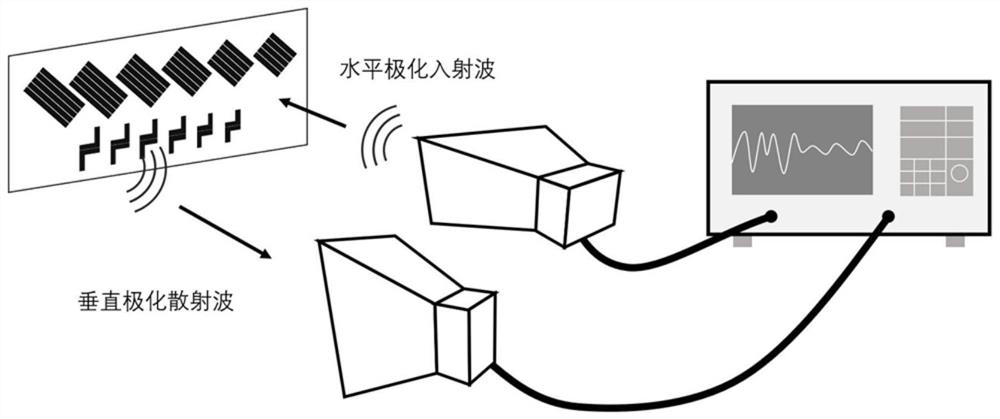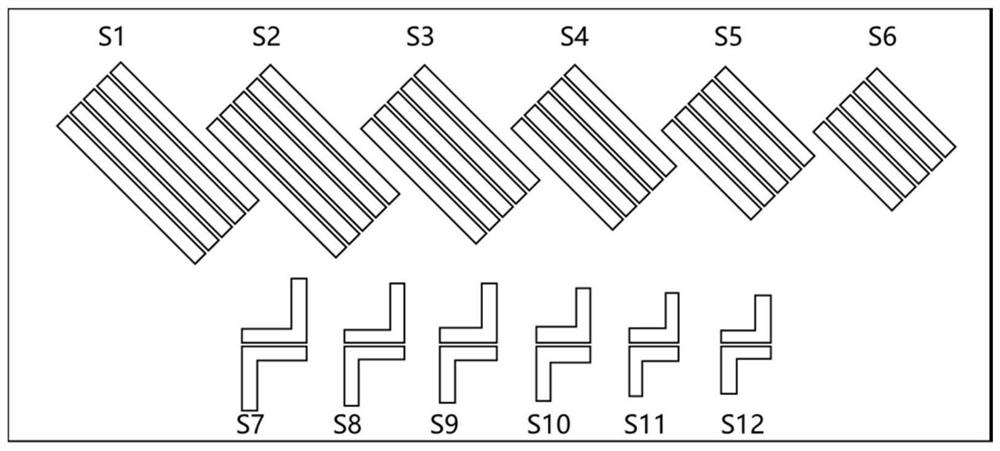Combined ultra-wideband cross-polarization chipless RFID tag based on MFCC feature coding
A technology of RFID tags and feature coding, which is applied in the direction of recording carriers, antennas, instruments, etc. used by machines, can solve problems such as coding failure, and achieve the effect of improving accuracy and improving spectrum utilization
- Summary
- Abstract
- Description
- Claims
- Application Information
AI Technical Summary
Problems solved by technology
Method used
Image
Examples
Embodiment
[0034] like figure 1 As shown, a combined ultra-wideband cross-polarized chipless RFID tag working system based on MFCC feature coding is composed of an RFID reader, a transmitting antenna TX, a receiving antenna RX and a label. The transmitting antenna TX emits horizontally polarized electromagnetic waves As an interrogation signal, the scattered wave after the signal is reflected by the tag can be obtained by the receiving antenna RX in the vertical polarization direction. Emphasize, and then use the time window of 20ns and the window moving step of 10ns to perform short-time Fourier transform, and then extract the 12-dimensional MFCC (Mel Frequency Cepstrum Coefficient, Mel Frequency Cepstral Coefficient) feature value of each frame. The tag implements the 2-8GHz MFCC feature encoding method, and can implement 15-bit encoding in total.
[0035] like figure 2 , 3 As shown, a combined ultra-wideband cross-polarized chipless RFID tag based on MFCC feature coding works in t...
PUM
 Login to View More
Login to View More Abstract
Description
Claims
Application Information
 Login to View More
Login to View More - R&D
- Intellectual Property
- Life Sciences
- Materials
- Tech Scout
- Unparalleled Data Quality
- Higher Quality Content
- 60% Fewer Hallucinations
Browse by: Latest US Patents, China's latest patents, Technical Efficacy Thesaurus, Application Domain, Technology Topic, Popular Technical Reports.
© 2025 PatSnap. All rights reserved.Legal|Privacy policy|Modern Slavery Act Transparency Statement|Sitemap|About US| Contact US: help@patsnap.com



